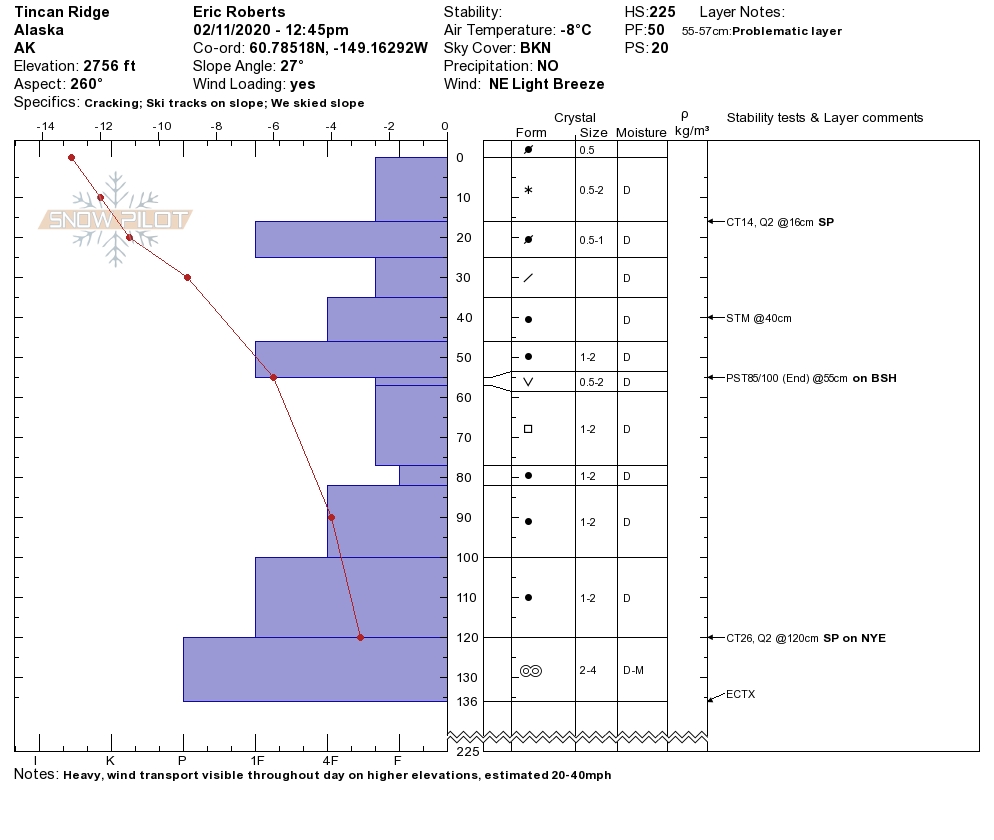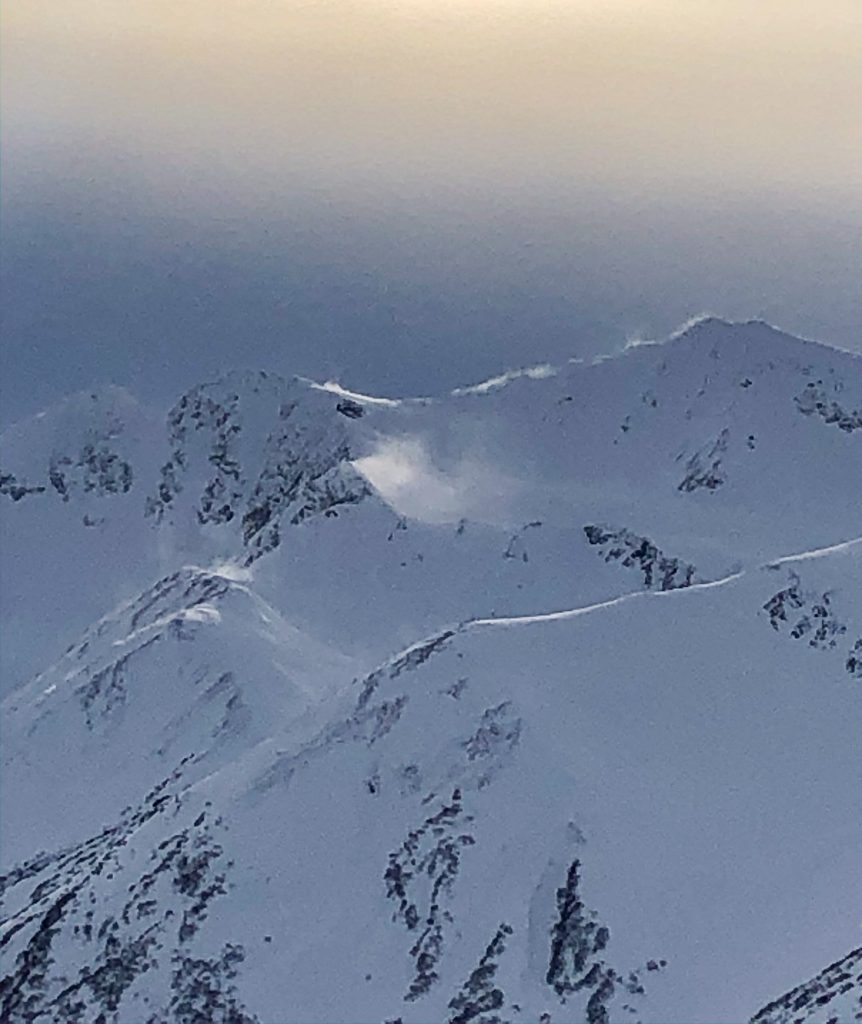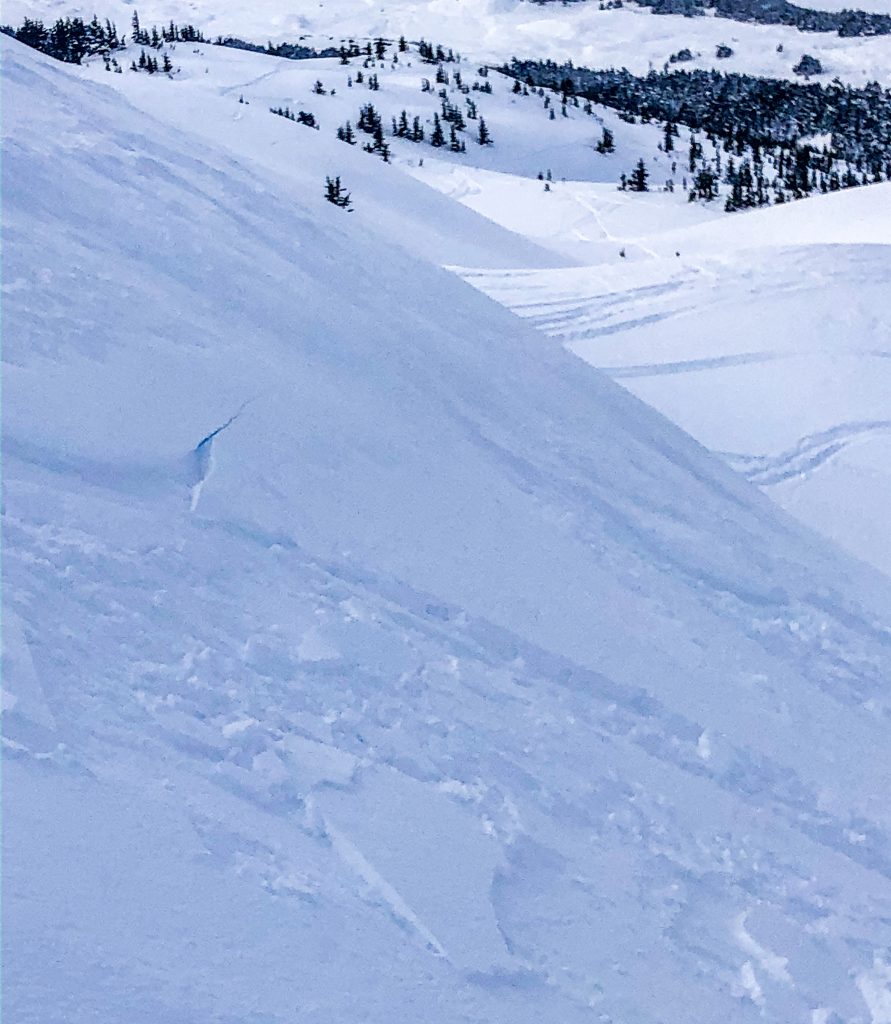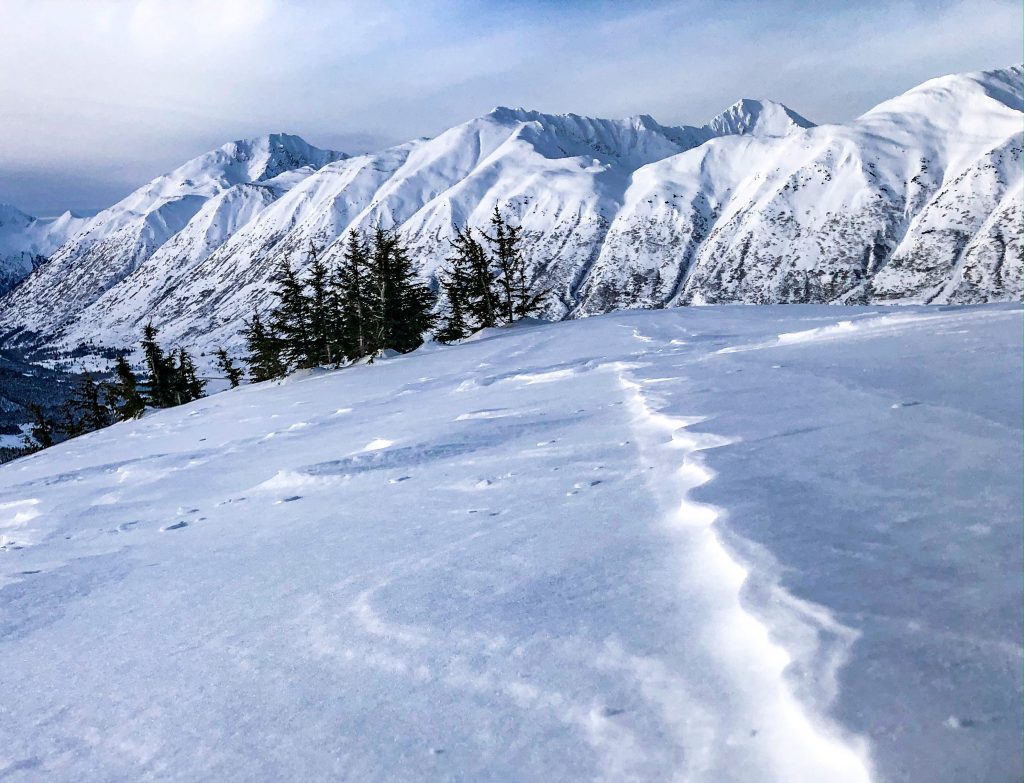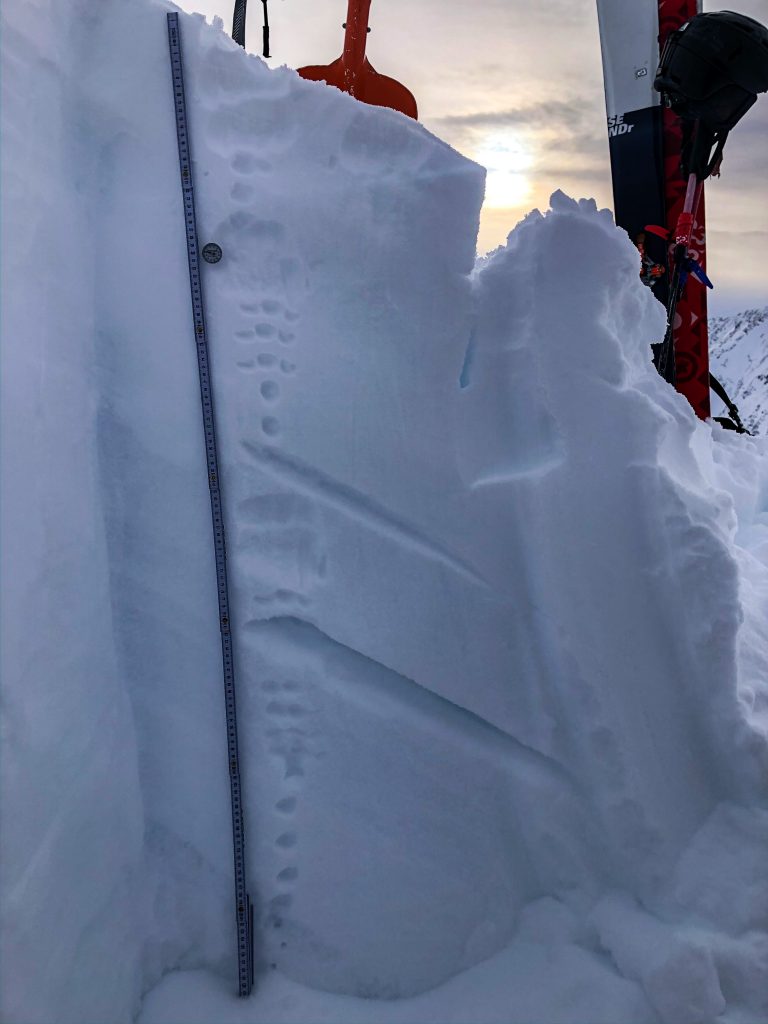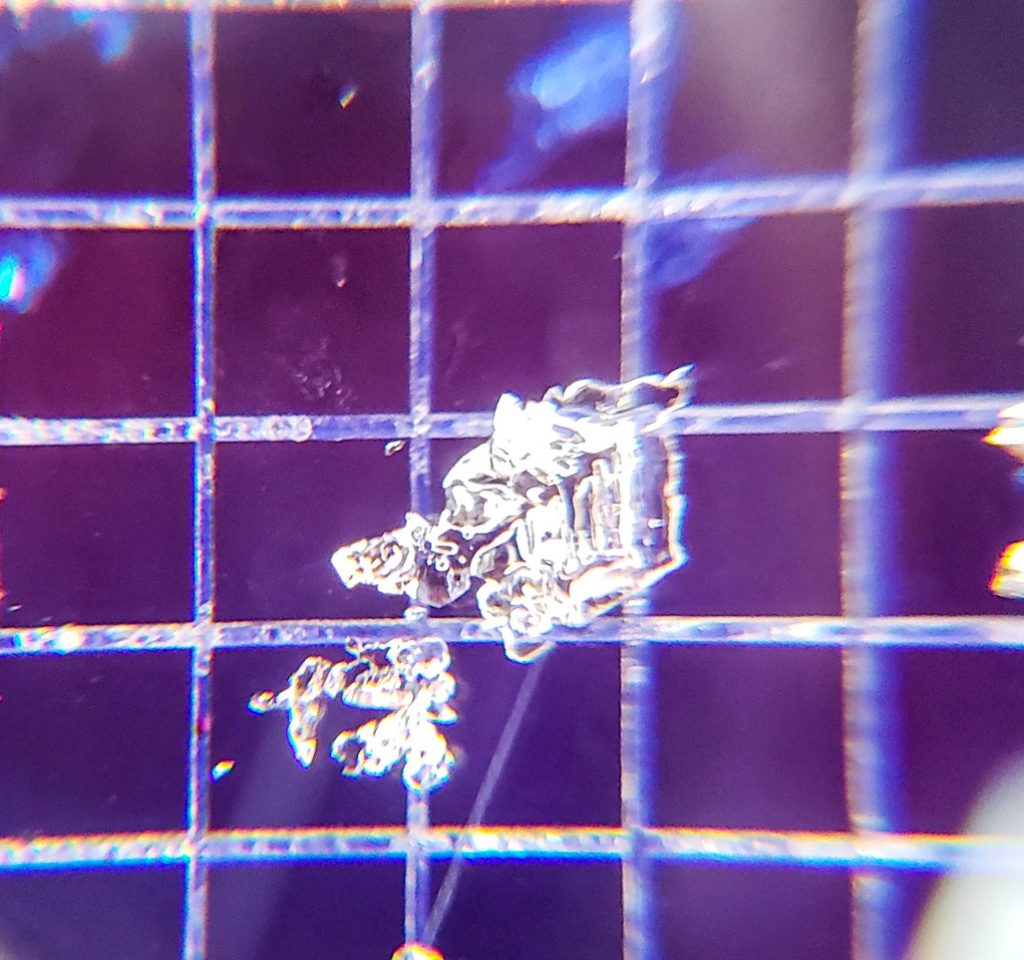| Recent Avalanches? | No |
| Collapsing (Whumphing)? | No |
| Cracking (Shooting cracks)? | Yes |
Observation: Turnagain
Location: Tincan
10:45-4:15pm
My partner and I ascended the standard approach track to treeline to assess recent wind affect, with intentions to conduct instability tests within the alpine. We encountered a variable wind-compacted snow surface from 1,500ft+ with a gradually thicker wind slab as we progressed in elevation. We conducted one test pit, observing the NYE MF Crust, and 1/20BSH, receiving results.
We skied within Common Bowl and the lower tree meadows with no incidents. The sun made a lengthy appearance with blue skies, before turning back to Overcast.
Localized Cracking up to 15ft on wind-affected convexities. Ski tests produced 4F wind slabs to release but self-arrest within a few meters.
Rapid Wind loading and transport was visible throughout the day further East at upper elevations along Tincan/ Lyon Creek.
10:45-4:15pm
Overcast trending to broken and ending with overcast skies.
Temperatures generally stayed within 15°F-20°F.
Winds were calm to Light, mainly from the NE, with strong wind plumes visibly transporting snow in the upper elevations, (3,000-4,000ft) off of Center Proper, Sunburst, and Tincan Peak.
-2-4cm windskin was present from 1,500ft+ with 10-20cm 4F, compacted wind-slab in isolated, exposed convexities and ridgelines.
-Soft powder in areas unaffected by wind events.
-Wideapread Wind Ripples present above 2,000ft
In general, our focus was to assess instability after recent wind loading and find the 1/20 buried surface hoar and its reactivity.
The recent wind loading created a progressive wind-skin to wind slab, ranging from 1cm-10cm, as we progressed higher. Height of Snow (HS) varied from wind-scoured to wind-deposited locations with depths of 120cm to 345cm, which were consistent from 2,500ft to 3,500ft. The wind affected surfaces produced localized cracking with 4F 30x30cm blocks releasing, but generally arresting after only a few meters.
Within our test pit, we visibly saw the 1/20 buried surface hoar, 55cm below surface, observed laid down, 1-2mm in size and with rounding edges.
We also observed the NYE MF crust, which was a failure layer on one of our instability tests. The NYE layer was unconsolidated when isolated, and approximately 10cm in thickness and 120cm down.
*See SnowPilot Photo for details*
